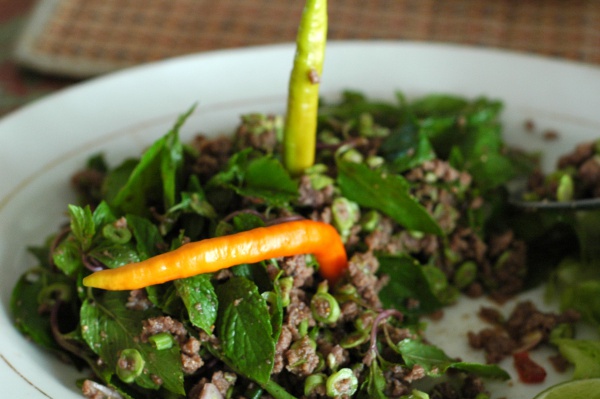Facts About Larb
Larb: The Flavorful Heart of Lao Cuisine
"Larb" a cherished Lao meat salad, proudly holds the title of the unofficial national dish of Laos. Its popularity extends beyond Lao borders, being a beloved dish in the Isan region of Thailand and among the Hmong communities in both Laos and Thailand. Variations of larb can also be found within the culinary traditions of the Tai peoples in Burma's Shan State and China's Yunnan province.
A World of Variations
Lao/Isan Style: The most common version originates from Laos and the Isan region of Thailand. This style features a mix of meats, fish, or even mushrooms, combined with fish sauce, lime juice, roasted ground rice, and an array of fresh herbs. It is traditionally served at room temperature, accompanied by sticky rice and an assortment of vegetables.
Tai Nyuan/Lanna Style: This northern Thai variation is distinguished by its unique flavor profile. Unlike its Lao/Isan counterpart, it forgoes fish sauce and sour elements, opting instead for a blend of dried spices and the distinctive addition of blood.
Saa: A different take on larb, "Saa" uses thinly sliced meat rather than minced, offering a variation in texture and experience.
Nam Tok: Often compared to larb, "Nam Tok" features barbecued pork or beef. The meat is grilled and then seasoned, creating a flavorful dish that is a favorite among many.
Health Considerations
While larb is undeniably delicious, it's important to be mindful of the health risks associated with consuming raw versions. Raw larb, particularly when made with pork, can pose serious health risks such as trichinosis, bacterial infections, or even rabies. In Thailand, there have been instances of Streptococcus suis infections linked to raw pork larb. Additionally, raw freshwater fish used in larb can carry Opisthorchis viverrini, a parasitic flatworm that can lead to liver problems.
Enjoying Larb Safely

 Vietnam
Vietnam